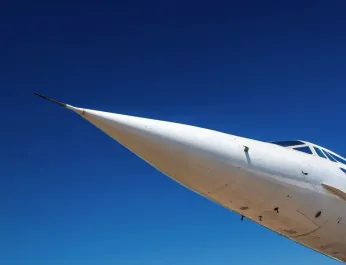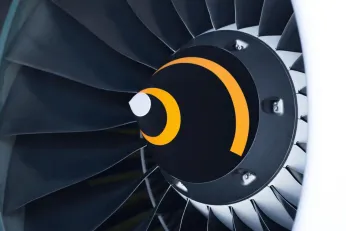
How the Boeing 707 Launched the Jet Age
Discover how the Boeing 707 launched the Jet Age, revolutionizing air travel and reshaping world aviation in this in-depth historical look.
Table of Contents
The Boeing 707 marked a turning point in the history of aviation and played a key role in shaping modern air travel. First introduced in the 1950s, the aircraft was a bold step forward, signaling the transition from propeller-driven planes to sleek, jet-powered airliners. Its introduction not only revolutionized how people traveled but also redefined global connectivity. Before the 707, long-distance travel was a time-consuming process, often requiring multiple stops and extended flight times. The 707 changed all of that, offering unprecedented speed and efficiency.
As the first commercially successful jetliner, the Boeing 707 made international travel accessible to more people than ever before. It wasn’t just a new plane—it was a gateway to a new era, where the world felt smaller and more interconnected. With its advanced technology and impressive range, the 707 allowed airlines to offer faster, more reliable flights, forever altering the expectations of passengers. By the time the 707 entered service, it was clear that aviation had entered a new chapter, one defined by innovation and ambition. The aircraft not only set new standards for performance but also opened the door to what would come to be known as the Jet Age.
The Technological Innovations of the Boeing 707
The Boeing 707 represented a significant leap forward in aviation technology, incorporating cutting-edge features that set it apart from previous aircraft. One of its most defining characteristics was its swept-back wing design. This innovation reduced drag and allowed the aircraft to achieve higher speeds, making it far more efficient than propeller-driven planes. The swept wings also improved overall performance, particularly at the high altitudes and speeds at which the 707 operated.
Another key feature of the 707 was its use of four turbojet engines. These engines, positioned in pods under the wings, provided the thrust necessary to sustain the aircraft’s high-speed, long-distance flights. Unlike earlier planes, which relied on piston engines, the turbojets were more powerful and reliable, offering a smoother and quieter experience for passengers. The inclusion of four engines also enhanced safety, as the aircraft could continue to fly even if one engine failed.

The 707’s pressurized cabin was another groundbreaking innovation. While earlier planes had begun to experiment with pressurization, the 707 perfected the concept, allowing it to fly at altitudes above 30,000 feet. This not only increased fuel efficiency but also ensured a more comfortable ride for passengers, who no longer had to endure the turbulence common at lower altitudes. Additionally, flying at higher altitudes enabled the 707 to avoid much of the weather that could disrupt flights, making for a more reliable travel experience.
The combination of these technological advancements gave the 707 a competitive edge in the aviation market. Its ability to fly farther and faster than its competitors made it an attractive option for airlines looking to expand their networks. For passengers, the 707 offered a glimpse of the future, where air travel would be faster, more comfortable, and more convenient than ever before. These innovations not only made the 707 a commercial success but also set the stage for future developments in aviation.
The Impact of the Boeing 707 on Global Travel
The Boeing 707 didn’t just improve the mechanics of flight—it fundamentally changed how people traveled and how the world was connected. Before the 707’s introduction, intercontinental travel was a luxury reserved for the wealthy or a necessity for a select few. Flights were often expensive, time-consuming, and limited in their capacity to connect distant parts of the world. With the arrival of the 707, all of that began to change.

One of the most significant impacts of the 707 was the reduction in travel times. The aircraft could fly at speeds of up to 600 miles per hour, dramatically cutting the time it took to cross oceans or continents. For example, a transatlantic flight that might have taken over twelve hours on a propeller-driven plane could now be completed in under eight. This reduction in travel time made it feasible for more people to consider flying, whether for business, leisure, or family visits. Suddenly, destinations that once seemed distant and inaccessible became reachable within a matter of hours.
The 707’s larger passenger capacity also played a crucial role in transforming global travel. With seating for over 140 passengers, the aircraft could accommodate more travelers than previous models, making it easier for airlines to offer more competitive ticket prices. This, in turn, made flying a more viable option for a broader segment of the population. Middle-class families, who might have previously relied on trains or ocean liners for long-distance travel, could now consider flying as a realistic alternative.

In addition to its technical capabilities, the 707 also helped to foster a new culture of global connectivity. Airlines were able to expand their networks, offering nonstop or one-stop flights to destinations that had previously been difficult to reach. As a result, international travel became more accessible, fueling cultural exchange, tourism, and economic globalization. Business executives could now travel overseas for meetings without losing days to transit, while tourists could explore new countries and cultures with greater ease.
The 707 also played a pivotal role in shaping the modern airline industry. Airlines such as Pan Am, TWA, and British Airways built their reputations on the capabilities of the 707, using the aircraft to establish global routes that are still in operation today. The aircraft’s success also encouraged other manufacturers to invest in jet technology, leading to increased competition and innovation within the industry. By making air travel faster, cheaper, and more reliable, the 707 laid the groundwork for the interconnected world we know today.
The Legacy of the Boeing 707 and the Rise of the Jet Age
The Boeing 707’s impact on aviation and global connectivity cannot be overstated. As the first commercially successful jetliner, it not only launched the Jet Age but also redefined the possibilities of air travel. Its advanced technology and impressive performance set new standards for the industry, inspiring a wave of innovation that continues to this day.
The 707’s legacy can be seen in many aspects of modern aviation. For one, its introduction marked the beginning of a shift toward jet-powered fleets, as airlines realized the benefits of faster, more efficient aircraft. Within a decade of the 707’s debut, jetliners had become the dominant form of air transportation, relegating propeller-driven planes to secondary roles. This transformation was not just about technology; it also reflected a change in public expectations. Passengers began to demand faster, more comfortable flights, and airlines responded by adopting the innovations pioneered by the 707.

The aircraft also had a lasting cultural impact. The image of a 707 soaring through the skies became a symbol of progress and modernity, representing the excitement and optimism of the Jet Age. For many people, the 707 was their first introduction to the world of air travel, and it left a lasting impression. Even today, aviation enthusiasts and historians regard the 707 as a milestone in the history of flight.
Beyond its influence on aviation, the 707 played a significant role in shaping the modern world. By making long-distance travel more accessible, it helped to shrink the globe, bringing people and cultures closer together. It paved the way for the globalization of trade, tourism, and communication, fostering a level of interconnectedness that would have been unimaginable in earlier decades. The Jet Age, launched by the 707, was not just an era of technological advancement—it was a time of profound social and economic transformation.
The success of the 707 also paved the way for future Boeing aircraft, including the iconic 747, which would go on to further revolutionize air travel. But even as newer and more advanced planes took to the skies, the 707’s contributions remained undeniable. It was the aircraft that proved jet-powered airliners were not just viable but essential, setting the stage for the modern era of aviation.
Reflecting on the Boeing 707's Influence
The Boeing 707’s introduction marked a pivotal moment in aviation history, forever transforming air travel and global connectivity. As the first commercially successful jetliner, it set the standard for speed, efficiency, and comfort, reshaping public expectations and the airline industry itself. By reducing travel times and making long-distance flights more accessible, the 707 brought people and cultures closer together, laying the foundation for the modern, interconnected world.
Also read:
Planenerd Newsletter
Join the newsletter to receive the latest updates in your inbox.






